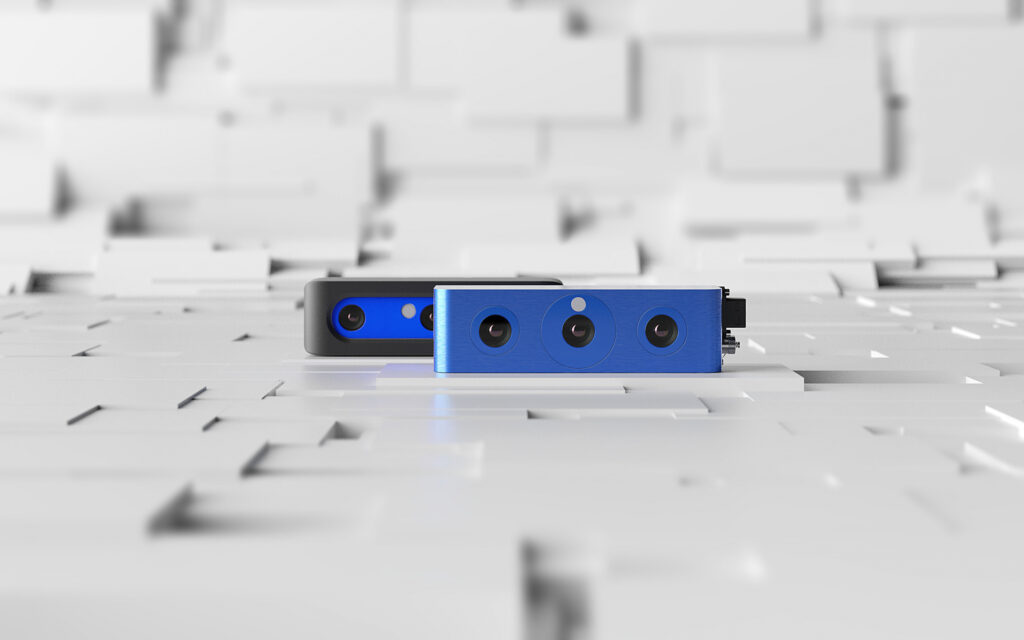Schlagwort-Archive: IDS Imaging Development GmbH
IDS NXT malibu now available with the 8 MP Sony Starvis 2 sensor IMX678
Intelligent industrial camera with 4K streaming and excellent low-light performance

IDS expands its product line for intelligent image processing and launches a new IDS NXT malibu camera. It enables AI-based image processing, video compression and streaming in full 4K sensor resolution at 30 fps – directly in and out of the camera. The 8 MP sensor IMX678 is part of the Starvis 2 series from Sony. It ensures impressive image quality even in low light conditions and twilight.
Industrial camera with live AI: IDS NXT malibu is able to independently perform AI-based image analyses and provide the results as live overlays in compressed video streams via RTSP (Real Time Streaming Protocol). Hidden inside is a special SoC (system-on-a-chip) from Ambarella, which is known from action cameras. An ISP with helpful automatic features such as brightness, noise and colour correction ensures that optimum image quality is attained at all times. The new 8 MP camera complements the recently introduced camera variant with the 5 MP onsemi sensor AR0521.
To coincide with the market launch of the new model, IDS Imaging Development Systems has also published a new software release. Users now also have have the the option of displaying live images from the IDS NXT malibu camera models via MJPEG-compressed HTTP stream. This enables visualisation in any web browser without additional software or plug-ins. In addition, the AI vision studio IDS lighthouse can be used to train individual neural networks for the Ambarella SoC of the camera family. This simplifies the use of the camera for AI-based image analyses with classification, object recognition and anomaly detection methods.
Market launch: New Ensenso N models for 3D and robot vision
Upgraded Ensenso 3D camera series now available at IDS

Resolution and accuracy have almost doubled, the price has remained the same – those who choose 3D cameras from the Ensenso N series can now benefit from more advanced models. The new stereo vision cameras (N31, N36, N41, N46) can now be purchased from IDS Imaging Development Systems.
The Ensenso N 3D cameras have a compact housing (made of aluminium or plastic composite, depending on the model) with an integrated pattern projector. They are suitable for capturing both static and moving objects. The integrated projector projects a high-contrast texture onto the objects in question. A pattern mask with a random dot pattern complements non-existing or only weakly visible surface structures. This allows the cameras to deliver detailed 3D point clouds even in difficult lighting conditions.
With the Ensenso models N31, N36, N41 and N46, IDS is now launching the next generation of the previously available N30, N35, N40 and N45. Visually, the cameras do not differ from their predecessors. They do, however, use a new sensor from Sony, the IMX392. This results in a higher resolution (2.3 MP instead of 1.3 MP). All cameras are pre-calibrated and therefore easy to set up. The Ensenso selector on the IDS website helps to choose the right model.
Whether firmly installed or in mobile use on a robot arm: with Ensenso N, users opt for a 3D camera series that provides reliable 3D information for a wide range of applications. The cameras prove their worth in single item picking, for example, support remote-controlled industrial robots, are used in logistics and even help to automate high-volume laundries. IDS provides more in-depth insights into the versatile application possibilities with case studies on the company website.
Learn more: https://en.ids-imaging.com/ensenso-3d-camera-n-series.html
Quickly available in six different housing variants | IDS adds numerous new USB3 cameras to its product range
Anyone who needs quickly available industrial cameras for image processing projects is not faced with an easy task due to the worldwide chip shortage. IDS Imaging Development Systems GmbH has therefore been pushing the development of alternative USB3 hardware generations with available, advanced semiconductor technology in recent months and has consistently acquired components for this purpose. Series production of new industrial cameras with USB3 interface and Vision Standard compatibility has recently started. In the CP and LE camera series of the uEye+ product line, customers can choose the right model for their applications from a total of six housing variants and numerous CMOS sensors.

The models of the uEye CP family are particularly suitable for space-critical applications thanks to their distinctive, compact magnesium housing with dimensions of only 29 x 29 x 29 millimetres and a weight of around 50 grams. Customers can choose from global and rolling shutter sensors from 0.5 to 20 MP in this product line. Those who prefer a board-level camera instead should take a look at the versatile uEye LE series. These cameras are available with coated plastic housings and C-/CS-mount lens flanges as well as board versions with or without C-/CS-mount or S-mount lens connections. They are therefore particularly suitable for projects in small device construction and integration in embedded vision systems. IDS initially offers the global shutter Sony sensors IMX273 (1.6 MP) and IMX265 (3.2 MP) as well as the rolling shutter sensors IMX290 (2.1 MP) and IMX178 (6.4 MP). Other sensors will follow.

The USB3 cameras are perfectly suited for use with IDS peak thanks to the vision standard transport protocol USB3 Vision®. The Software Development Kit includes programming interfaces in C, C++, C# with .NET and Python as well as tools that simplify the programming and operation of IDS cameras while optimising factors such as compatibility, reproducible behaviour and stable data transmission. Special convenience features reduce application code and provide an intuitive programming experience, enabling quick and easy commissioning of the cameras.
Learn more: https://en.ids-imaging.com/news-article/usb3-cameras-series-production-launched.html
